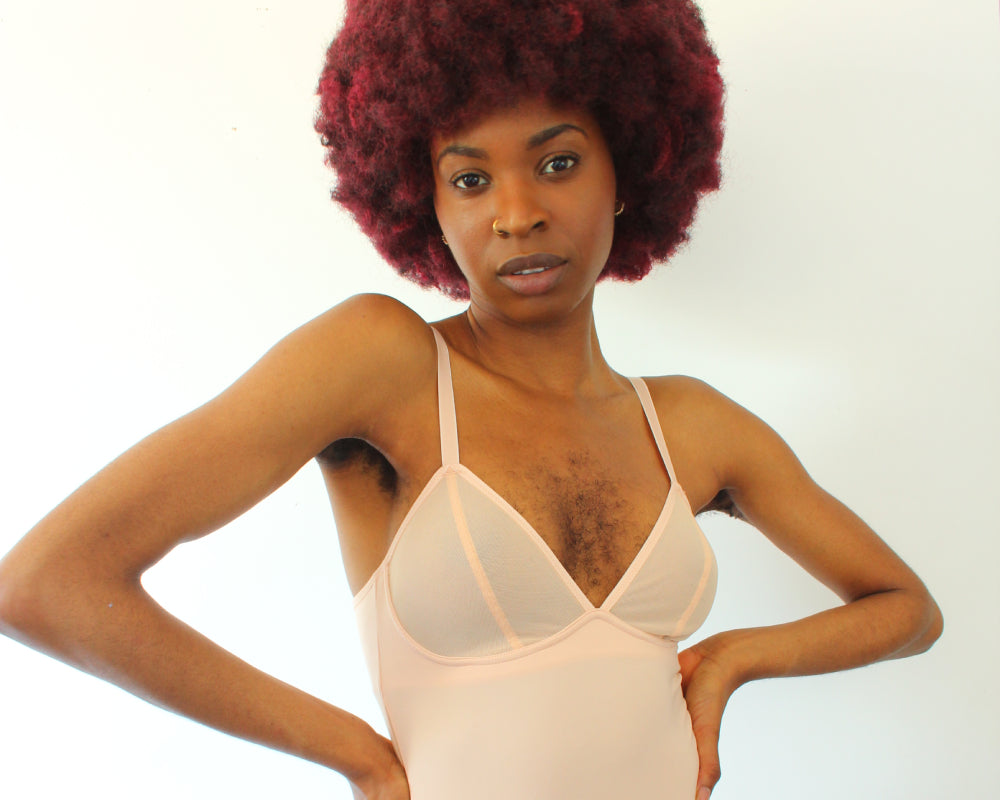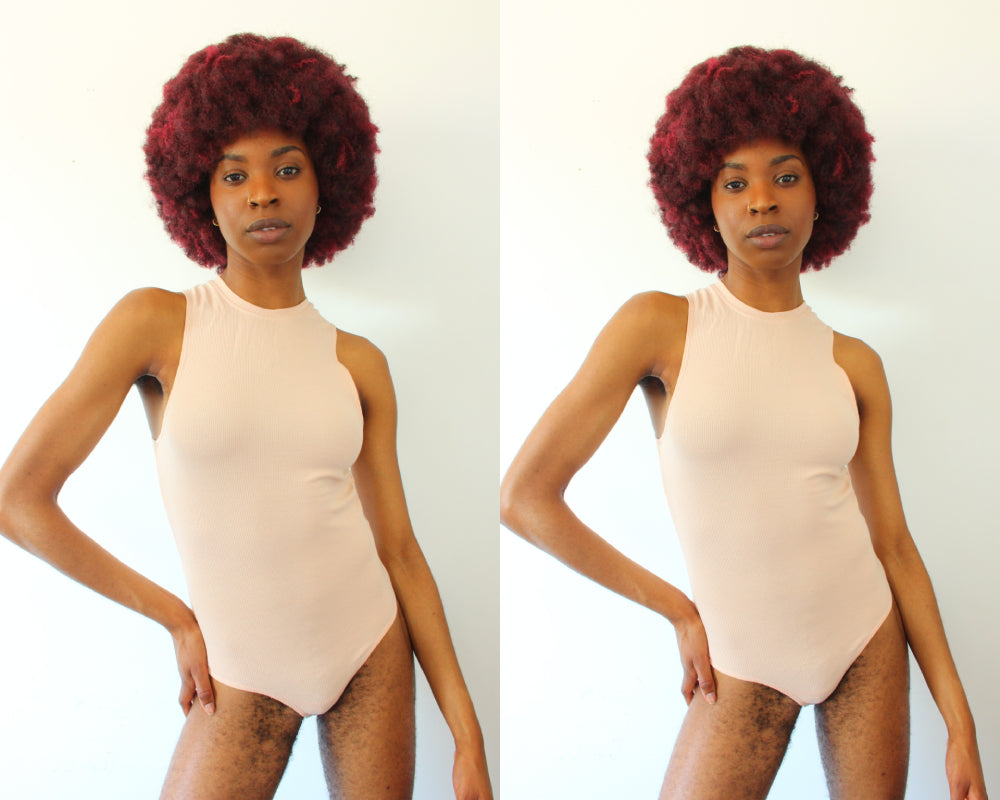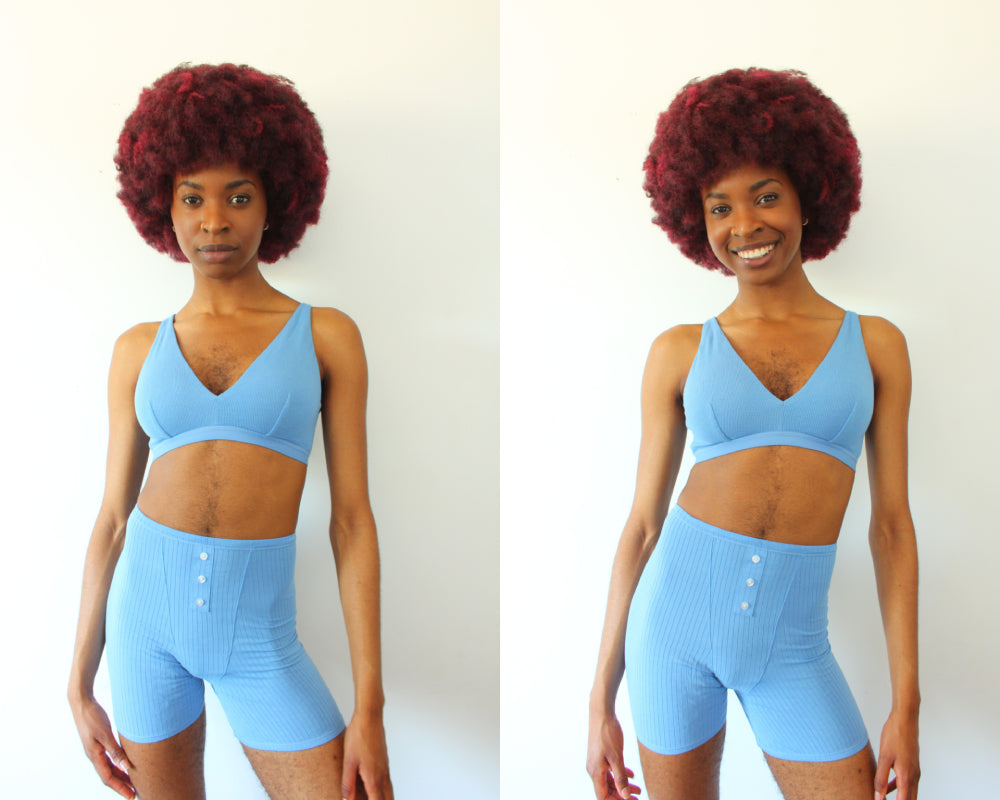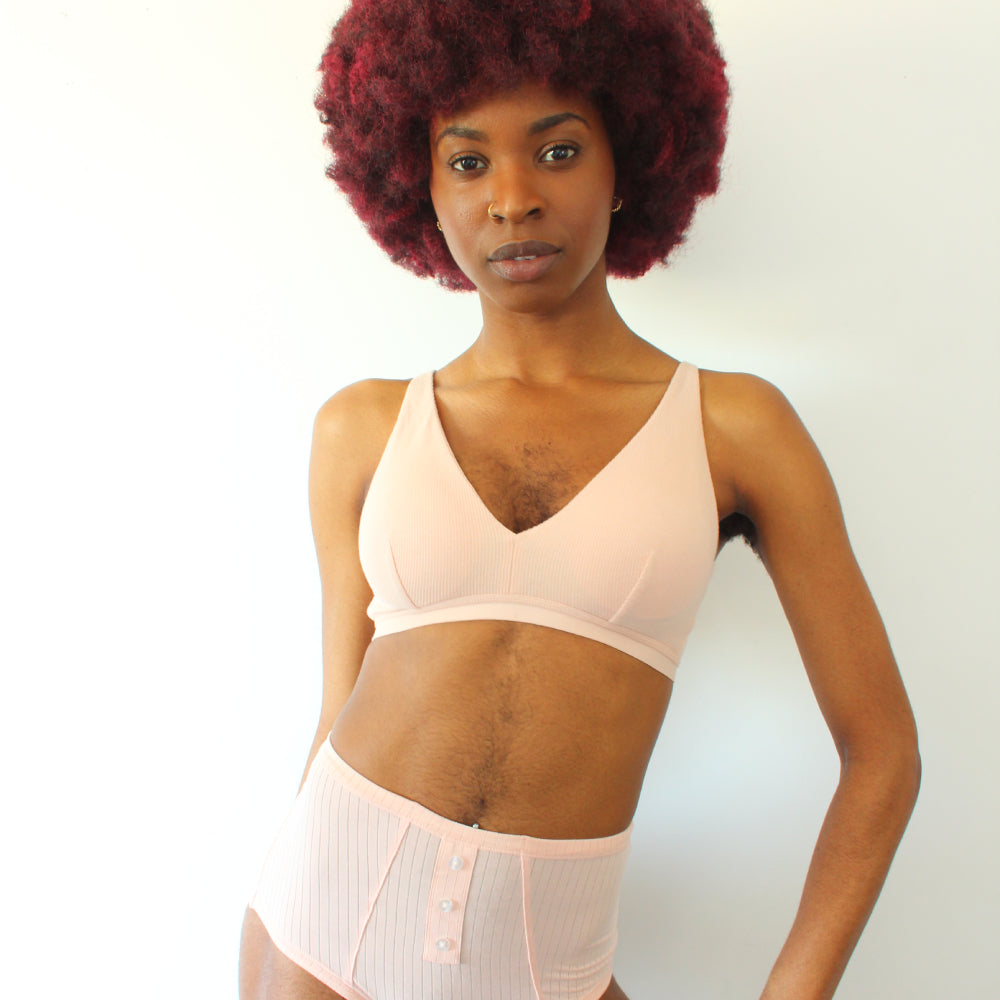Body Hair Is Beautiful, and so Is Artist and Activist Queen Esie

Body hair: everyone has it. Some forms of it are praised, like carefully shaped eyebrows and long, silky hair, whereas other forms are shamed — especially if you're a woman.
Globally, the hair removal industry is valued at over $4 billion USD (a number that's expected to grow). For the most part, the market, which is comprised of razors, balms, lasers, and other treatments is aimed at women who's bodies are expected to be smooth and hairless in all the right places.
If you take a step back and consider just how gendered and eurocentric our cultural appraisals of body hair are, it all begins to seem a little arbitrary. That's because it is.
In truth, nothing makes the hair under your arms any less beautiful than the hair on your head. And body hair activists the likes of Esther Calixte-Bea (better known as Queen Esie) are shining a light on the body hair movement and inspiring women everywhere to ditch the razors and embrace their natural beauty.
Here's what she had to say about toppling taboos, increasing representation, and healing through art.
Your art, like your online persona, is all about subverting beauty norms and celebrating female body hair. How did you find your niche?
I became a body hair activist in 2019 after finally embracing my body hair and specifically my chest hair. I had no one to look up to or to help change the way I felt about my body hair, so I had to work on myself.
After questioning society and realizing there was nothing wrong with my body hair, only that I was taught it was wrong on women’s bodies, I knew I wanted to normalize this taboo on social media and within my artistic practice. I wanted to start a conversation in the art world surrounding this issue and create representation.
As a kid, I rarely saw women that looked like me in the museums of Montreal. I never saw hairy women either. From then on, I knew it was important for the next generation to have a positive influence on their self-esteem and not feel the need to conform to society's beauty standards.
I was able to get a conversation started on social media, as well as in the art world. I had my first solo exhibition last year after graduating from university with a bachelor in Fine Arts. The reception was positive, especially from women who felt seen through my work while others felt it was about time we see hairy women in gallery spaces.
In June, I'll be part of a group art show at the Montreal Museum of Fine Arts showing my painting “Growth” which illustrates a black woman painfully shaving her body hair and removing the flower petals that naturally grow on her skin.
Toxic beauty standards dictate that women should be smooth and hairless. How have you learned to embrace your natural beauty?
Images of hairless women bombarded me every day, through media and seeing other women around me conform. I was able to embrace my natural beauty when I grew tired of hating myself, tired of crying every time I saw my naked reflection in the mirror, and of feeling the need to look like everyone else.
I first started by repeating positive affirmations, which was something my mother taught me. I would compliment the parts of my body I hated every morning and before bed. I would even catch myself every time I said something negative about my appearance and correct the voice by saying "I'm beautiful and so is my body hair."
After realizing, over time, that removing my chest hair made me feel like I wasn’t myself, I knew that my hard work had paid off. I felt comfortable with my hairiness and didn't see it as an issue, but instead started to love it.
Two years later, after embracing my body hair, my aunt from Ivory Coast shared life changing information with me. She shared that it was normal to be hairy, that the women in my family are very hairy and that in my great grandmother’s time it was seen as beautiful.
That’s when I fully understood that beauty standards change over time and that I had to personally start decolonizing beauty as a Black woman. Shaving every part of my body was not originally part of my Ivorian culture and was very much influenced by the West.
What first inspired you to ditch the razors?
I first felt inspired to ditch the razor after realizing how much more hair was growing. My body hair was becoming darker and stronger. Waxing, shaving and electrolysis became emotionally draining and physically painful.
I started getting scars from ingrown hair and electrolysis. I started to feel like my body was fighting back. In 2019, I created the Lavender Project, a self-photography project where I created a purple dress that showed my chest hair for the first time and shared those images with the world on Instagram.
I wanted to talk about femininity and female body hair, and change the narrative around it by saying “Yes, body hair is beautiful and you can be beautiful wearing it proudly.”
I finally stopped removing my chest hair, and in 2020, I challenged myself to stop shaving completely and to go out unashamed during the body hair movement Maipoils, here in Montreal. It was an incredibly freeing and empowering experience.
By increasing representation, do you think we can inspire others to do the same?
Representation is incredibly powerful. It makes us feel seen, heard, and understood. It makes us feel like we exist. It also destroys the idea that only one body type is beautiful and allows us to look at our own bodies with love.
When it comes to body hair, it will shatter the myth that body hair is unhygienic and gross on women. It will also push us to start embracing all differences because body hair is part of our differences.
Normalization creates a space where women can feel comfortable with their body hair and not feel pressure to remove it. People around also won't feel the need to stare or shame because everyone has body hair.
Your artwork deals with themes of female identity and beauty. Has it been an important outlet for you in your journey as a body hair activist?
I always knew I was going to be an artist growing up, but didn’t know what I was going to talk about in my work. I had moments when I felt a powerful urge to talk about my struggles with my appearance, but never took it as a sign until I became overwhelmed with constantly having to remove my body hair.
In a way art helped me heal; I was able to paint myself, to paint a hairy woman like me, and say to myself "this is me." I was able to paint my pain and speak through my paintings.
Women are often taught that their value is beauty — which is firmly rooted in gender binaries and eurocentric ideals. Do you think there’s power in redefining beauty for ourselves?
There's great power in redefining beauty for ourselves. It means we must question the ideas that are ingrained in us, telling us what is beautiful and what is not. We don't wake up hating parts of ourselves, we're constantly told what to hate and fix.
Redefining means looking at yourself and choosing to find yourself beautiful and everything that makes you unique despite what society says.
As women, we're taught our value resides in beauty, which can be paralyzing. Know that they have told our mothers, grandmothers, and great-grandmothers how they should look — and you can break that curse.














